Today, we are looking at the WD Black SN770M 1TB NVMe SSD. This is the third M.2 2230 sized SSD in my look at the current 2230 market; previous entries into this series are the Lexar PLAY and the Silicon Power UD90 2230. Just to review, the 2230 (30mm) sized drives are physically shorter than their larger 2280 (80mm) brethren that are the standard on most platforms. 2230 sized drives are used in devices such as small laptops and mobile game devices like the Steam Deck and ROG Ally. While the Lexar PLAY and the UD90 were nearly identical drives, the WD SN770M uses a completely different controller and NAND. We will have at least one more drive review coming soon in this series; next up on the block is the Corsair MP600 Mini. For today, I am interested to see how the WD Black SN770M holds up.
WD Black SN770M 1TB PCIe Gen4 NVMe SSD
The WD Black SN770M 1TB comes in a small, single-sided M.2 2230 (30mm) form factor.
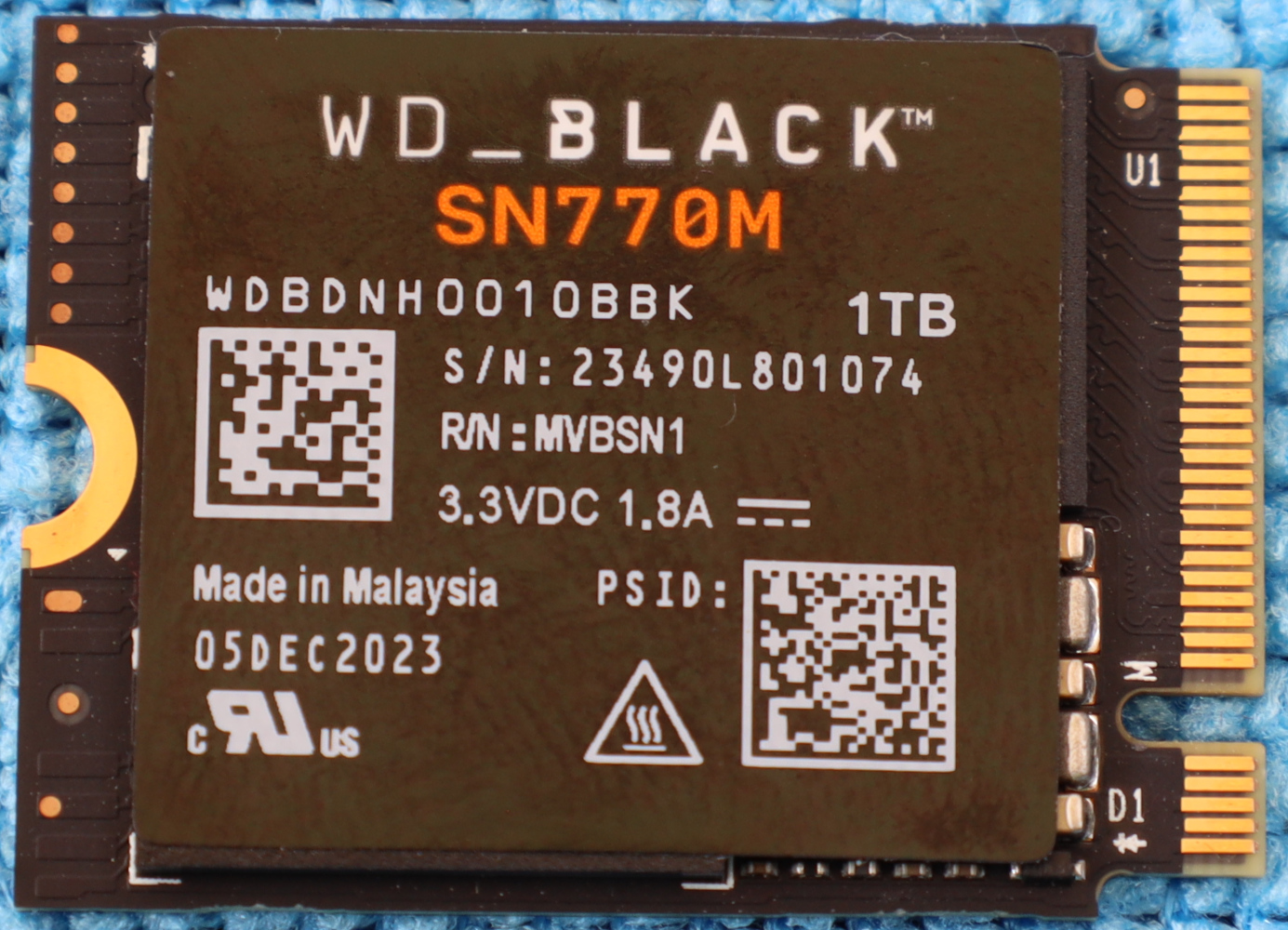
Whereas both the Lexar PLAY and the UD90 came equipped with a Silicon Motion SM2269XT controller, WD is a much larger player in the storage market and operates at a higher level of vertical integration. The controller on the drive is made by SanDisk, which is another WD brand. The NAND appears to be 112-layer BiCS55 TLC, which was developed between WD and Kioxia. As with previous 2230 sized drives, this is a DRAM-less model. The net result of all of this is that essentially all components on the SN770M are sourced from within a division of WD.
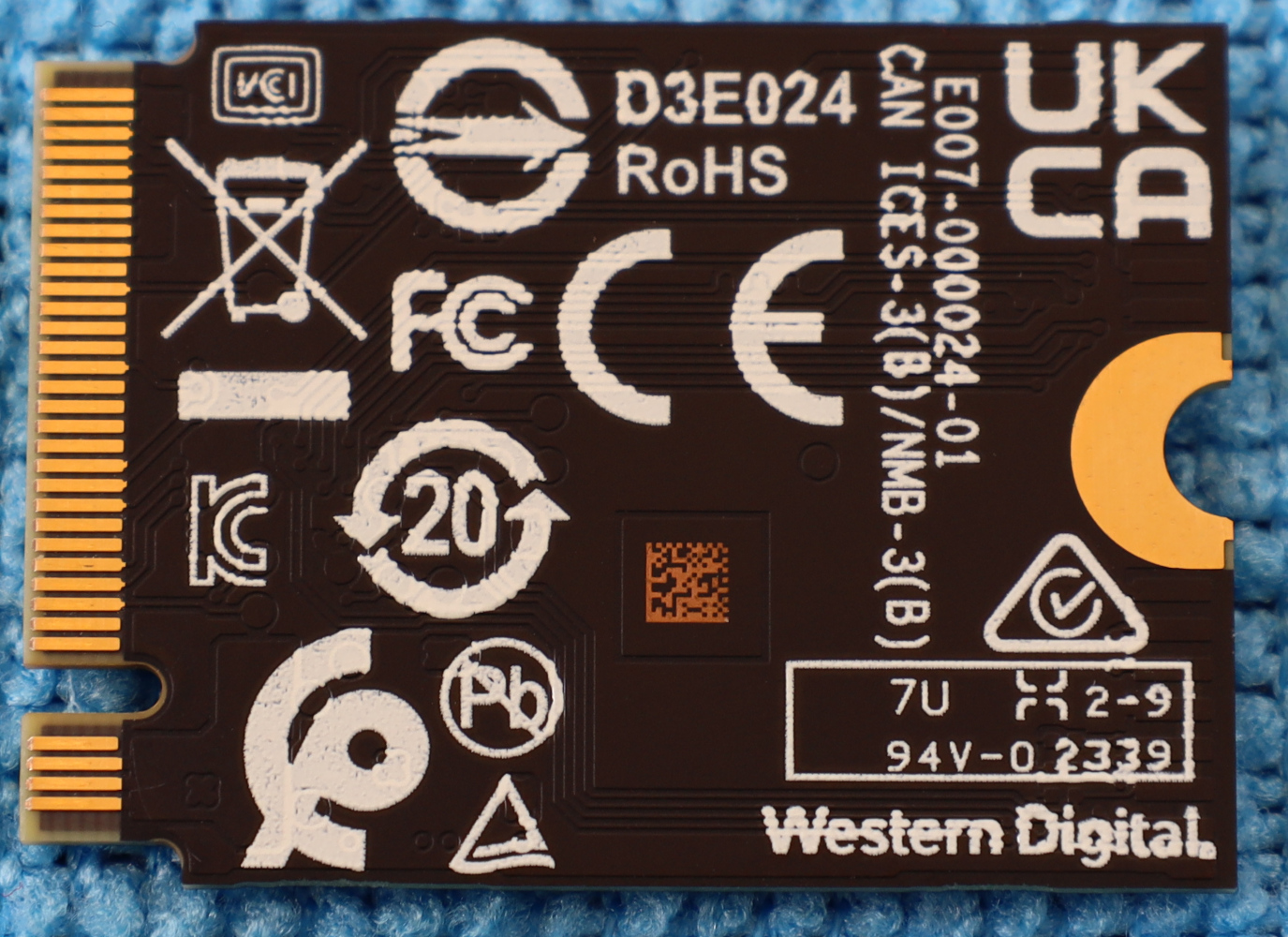
The backside of the WD SN770M has nothing on it, which is to be expected.
WD Black SN770M 1TB SSD Specs
The WD Black SN770M is available at 500GB, 1TB, and 2TB capacity points.
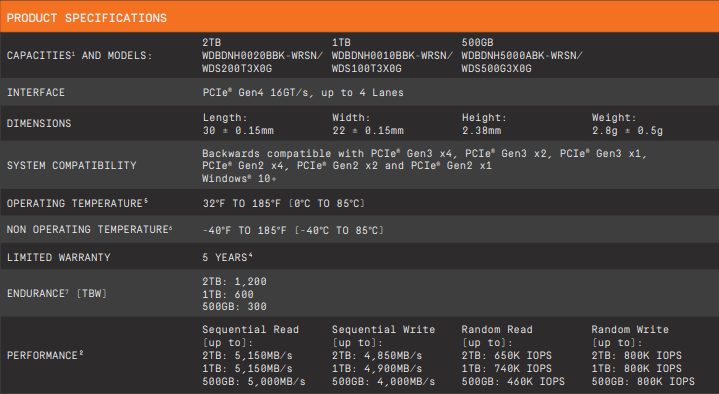
The 1TB model has specified 5150 MB/s read and 4900 MB/s sequential write speeds. Hovering near 5 GB/s is a pretty good spot for this kind of drive, in my opinion, as it places the SN770M firmly in Gen 4 territory. When comparing specs, the SN770M is fairly close to the Lexar PLAY, at least on paper. The rated endurance on the SN770M 1TB is 600 TBW, which is perfectly in line for a 1TB drive. Finally, rounding out the specs is the industry standard 5-year warranty. Warranty support is always a bit of a wild card on drives madde by less established brands, but WD should be pretty rock solid in this department.
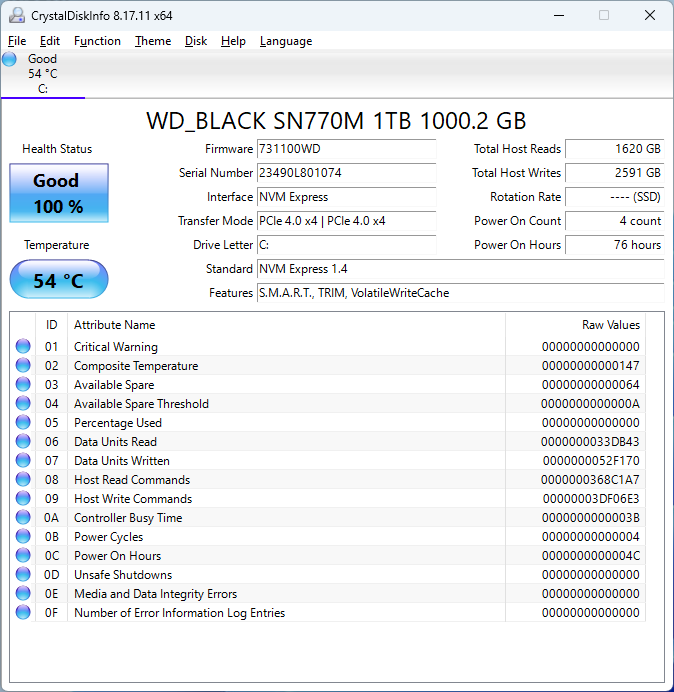
CrystalDiskInfo can give us some basic information about the SSD and confirms we are operating at PCIe 4.0 x4 speeds using NVMe 1.4. One day I would like to see one of these drives running on an x2 interface, but that is for another day.
Test System Configuration
We are using the following configuration for this test:
- Motherboard: MSI MAG X670E Tomahawk
- CPU: AMD Ryzen 9 7900X (12C/24T)
- RAM: 2x 16GB DDR5-6000 UDIMMs
Our testing uses the WD SN770M 1TB as the boot drive for the system, installed in the M.2_1 slot on the motherboard. This slot supports up to PCIe Gen 5 x4. The drive is filled to 85% capacity with data, and then some is deleted, leaving around 60% used space on the volume. Special note: the M.2_1 slot on this board does not natively support -sized drives, so I just rigged it into place. It does not affect my testing, but it was worth noting.
Next, we are going to get into our performance testing.

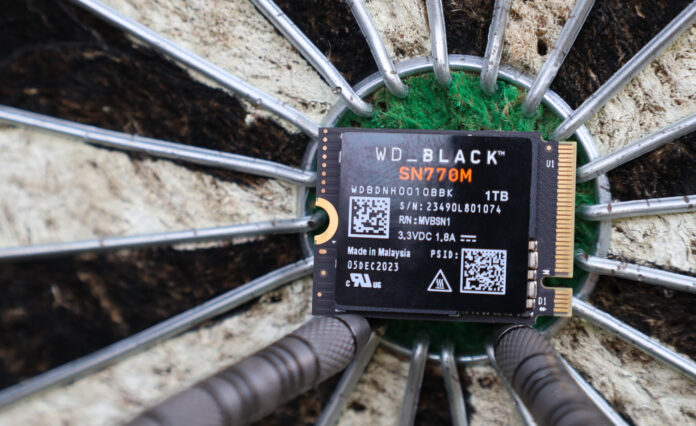


Probably the most obvious sign is that it definitely draws more power than the 2269xt based drives. Not great when most times it underperforms them
And it’s precisely those devices it will go into where you want to watch the power draw
In the review it is written “SPEC performance likely is not what this drive is targeted at, so I am mostly fine with these results.” I don’t understand this statement.
If the SSD targets simple synthetic benchmarks but underperforms on tests which mimic real application access patterns, that’s something I would not be fine with. I’d take that as a warning sign.